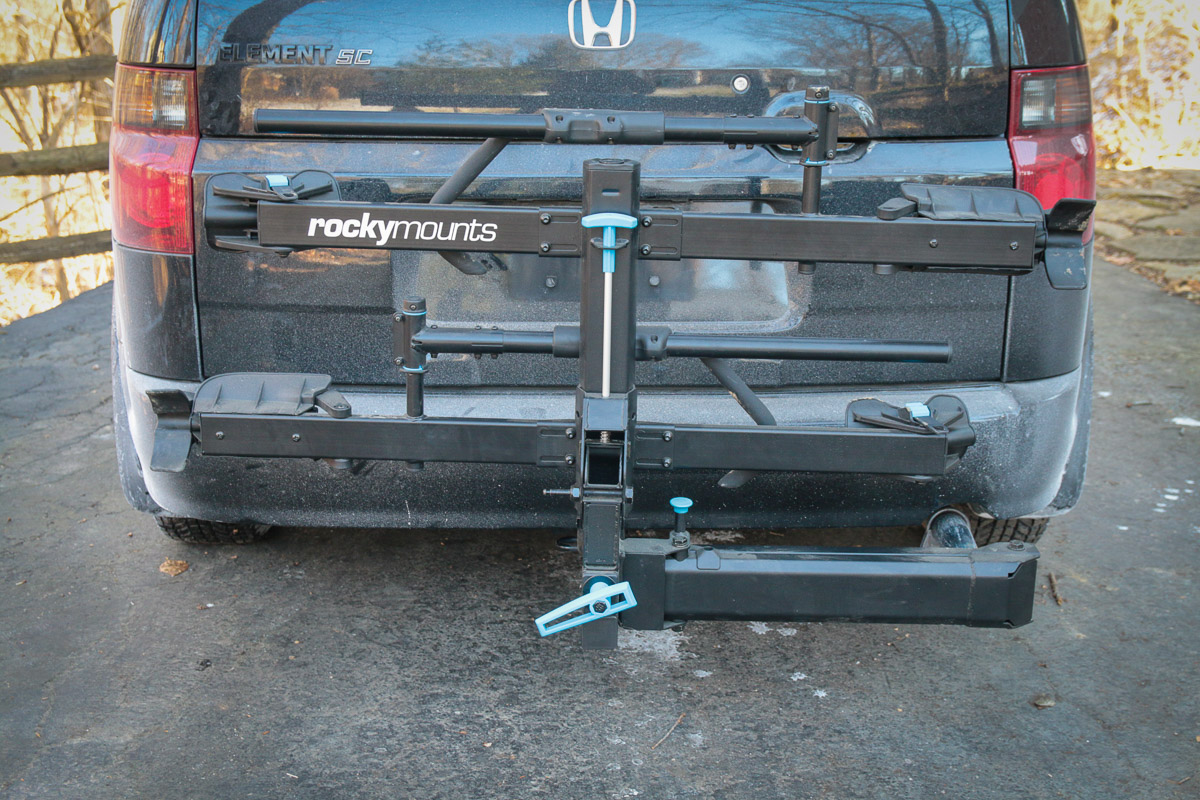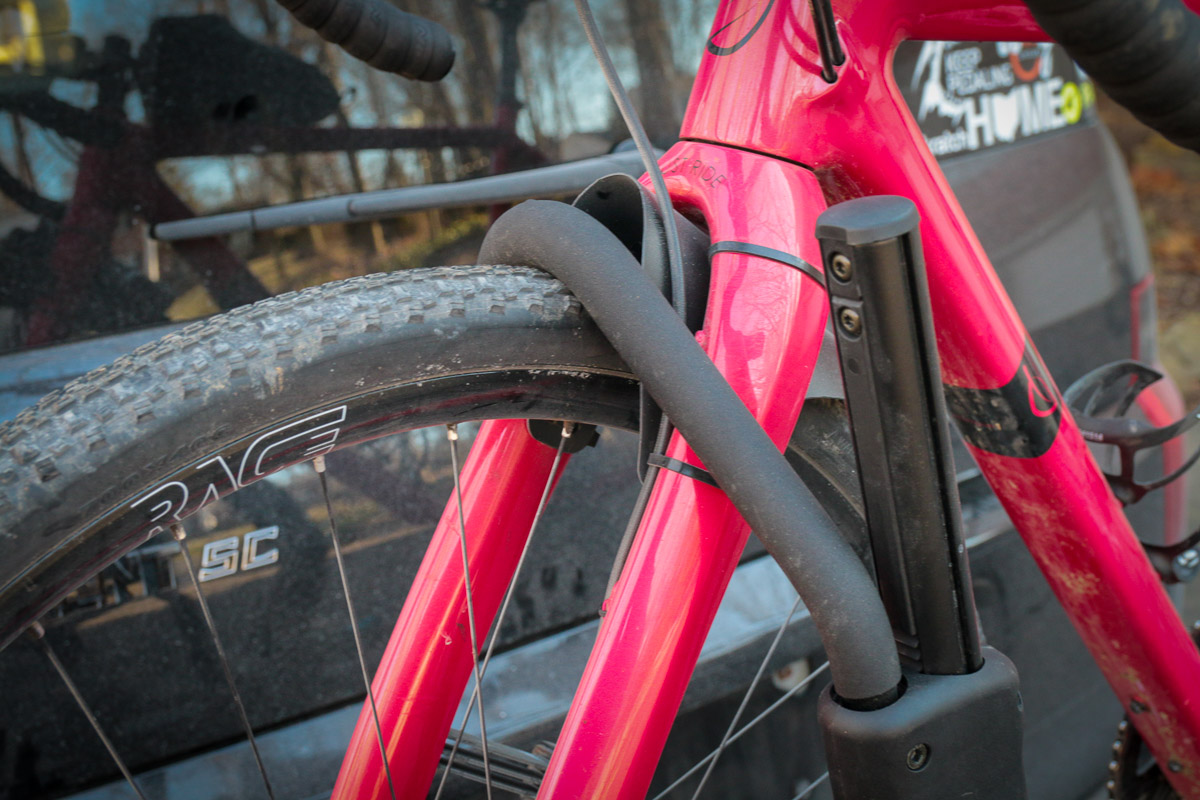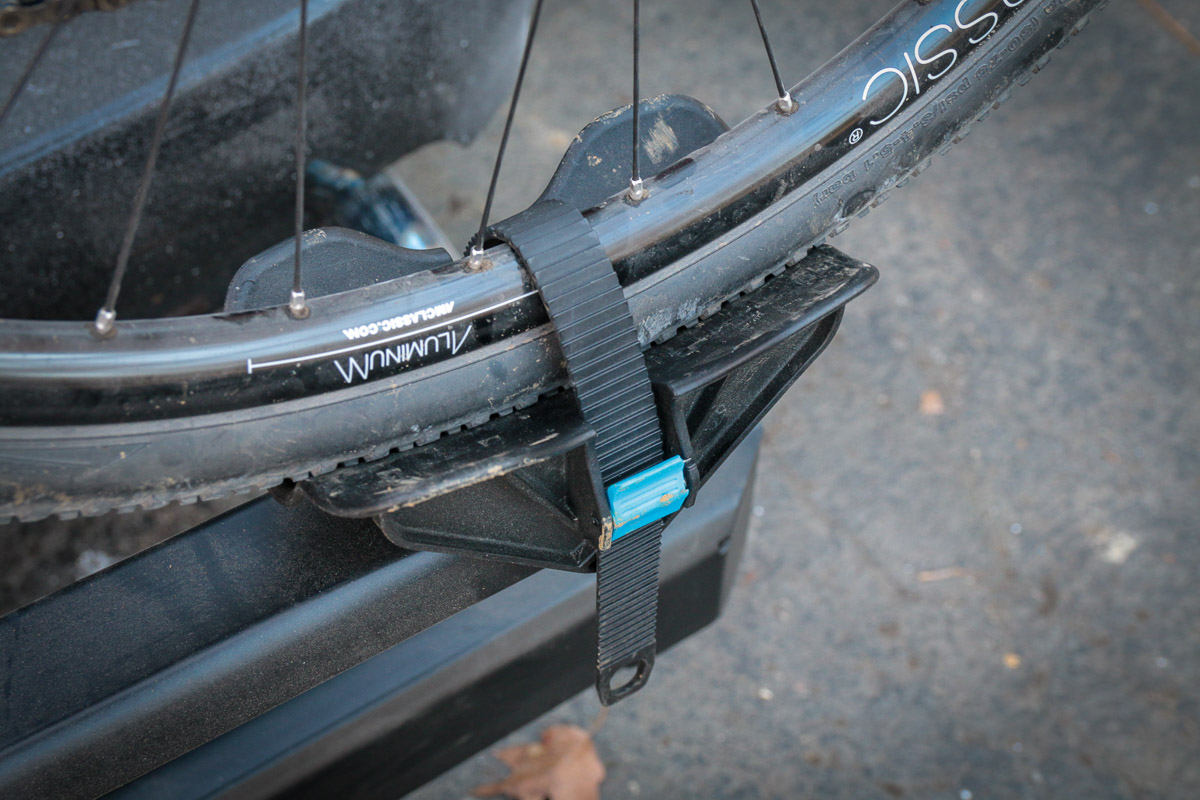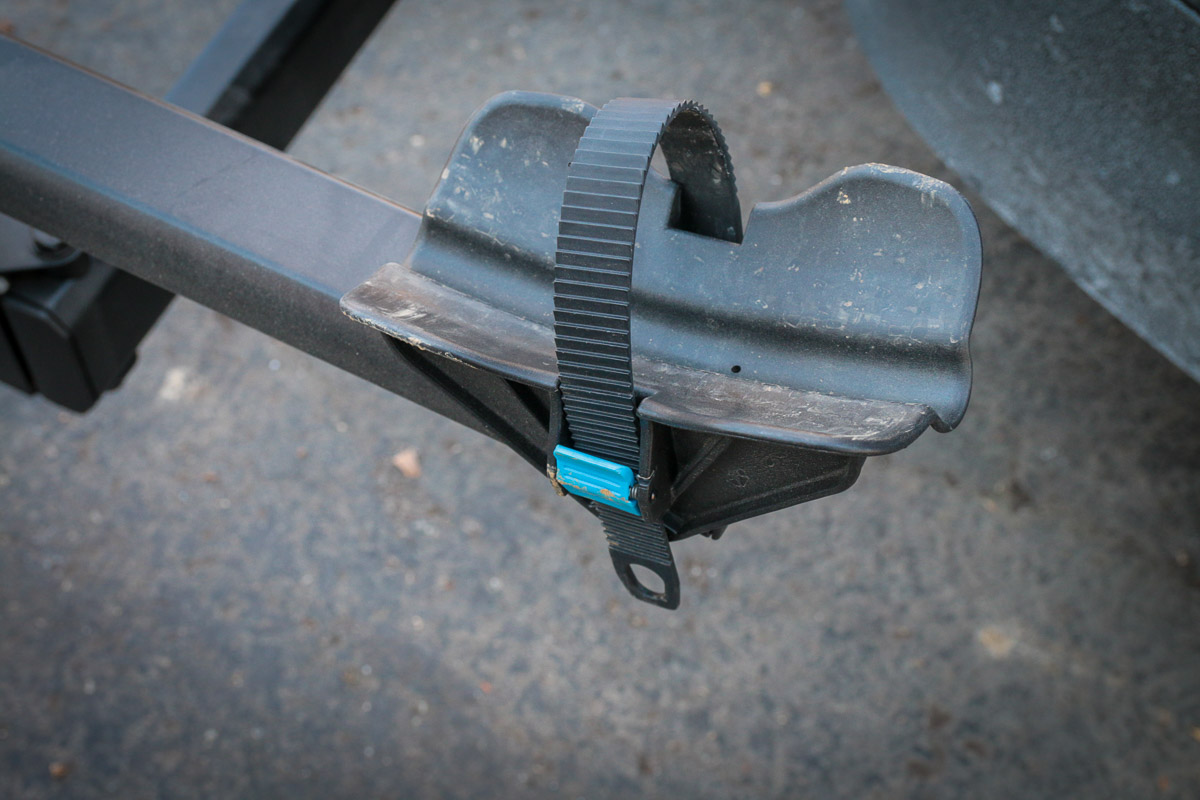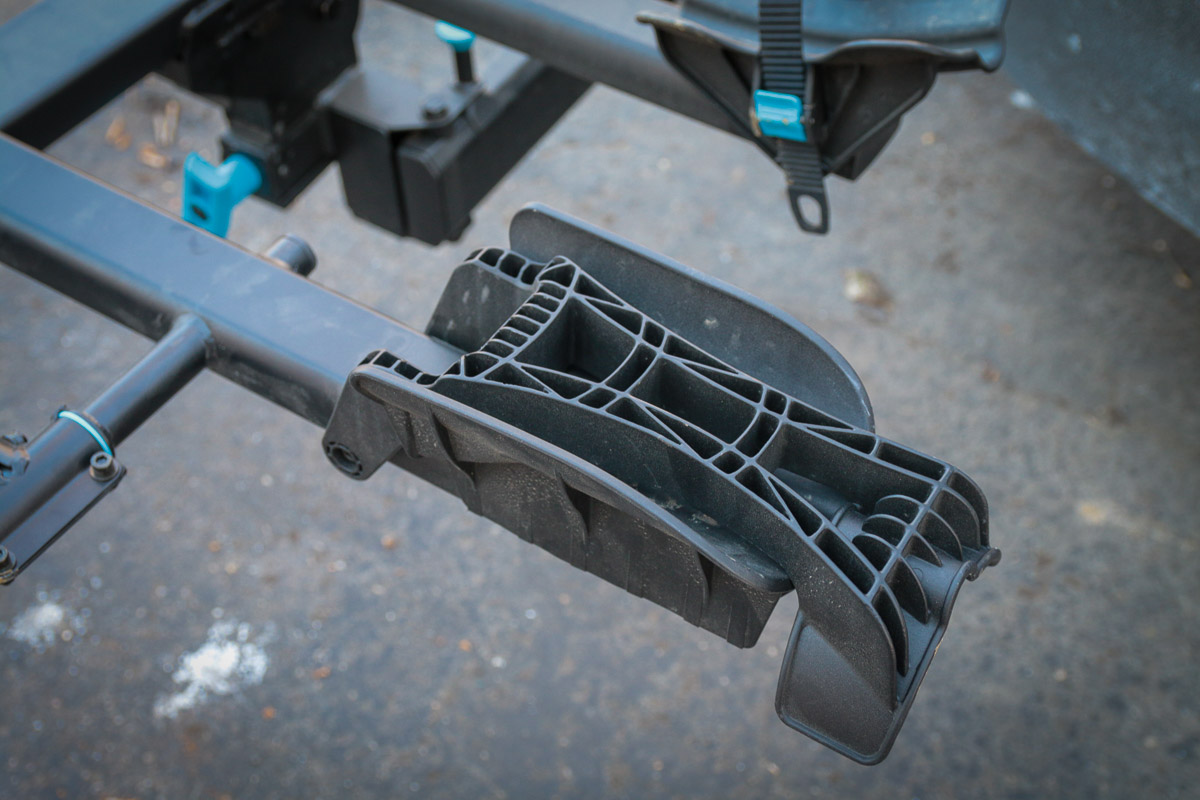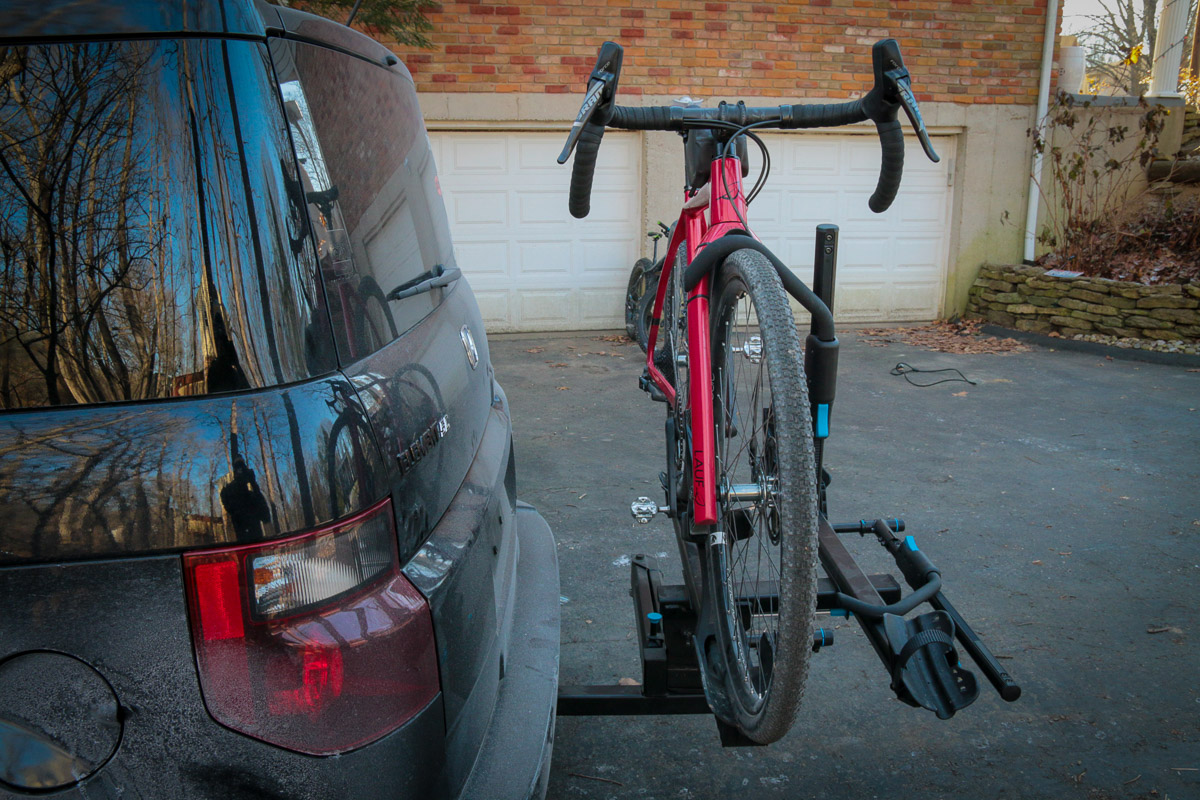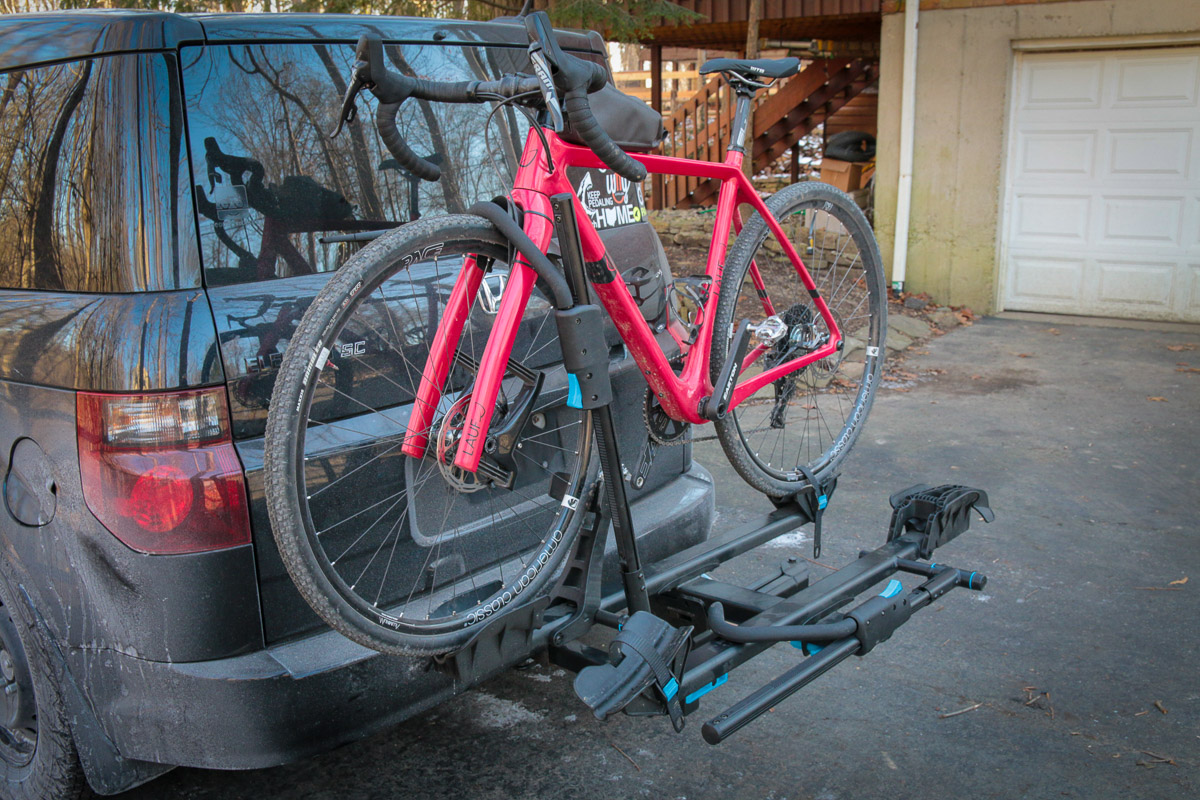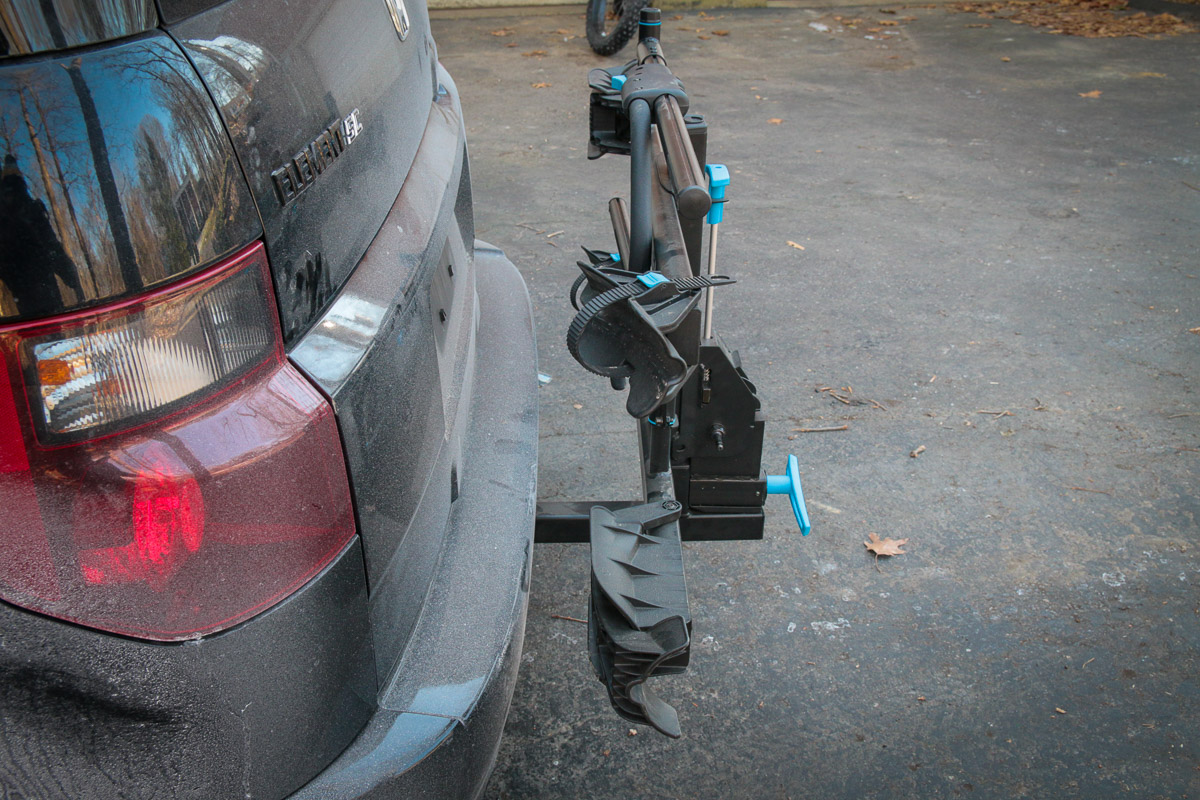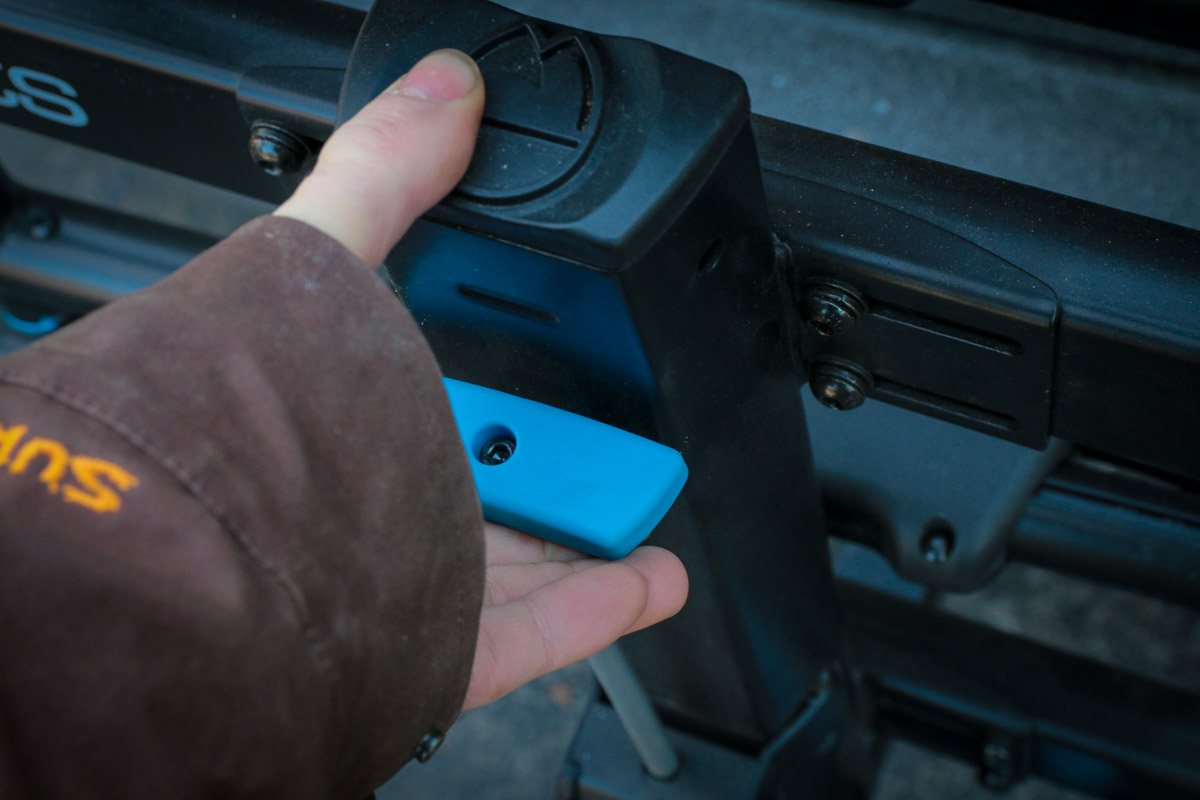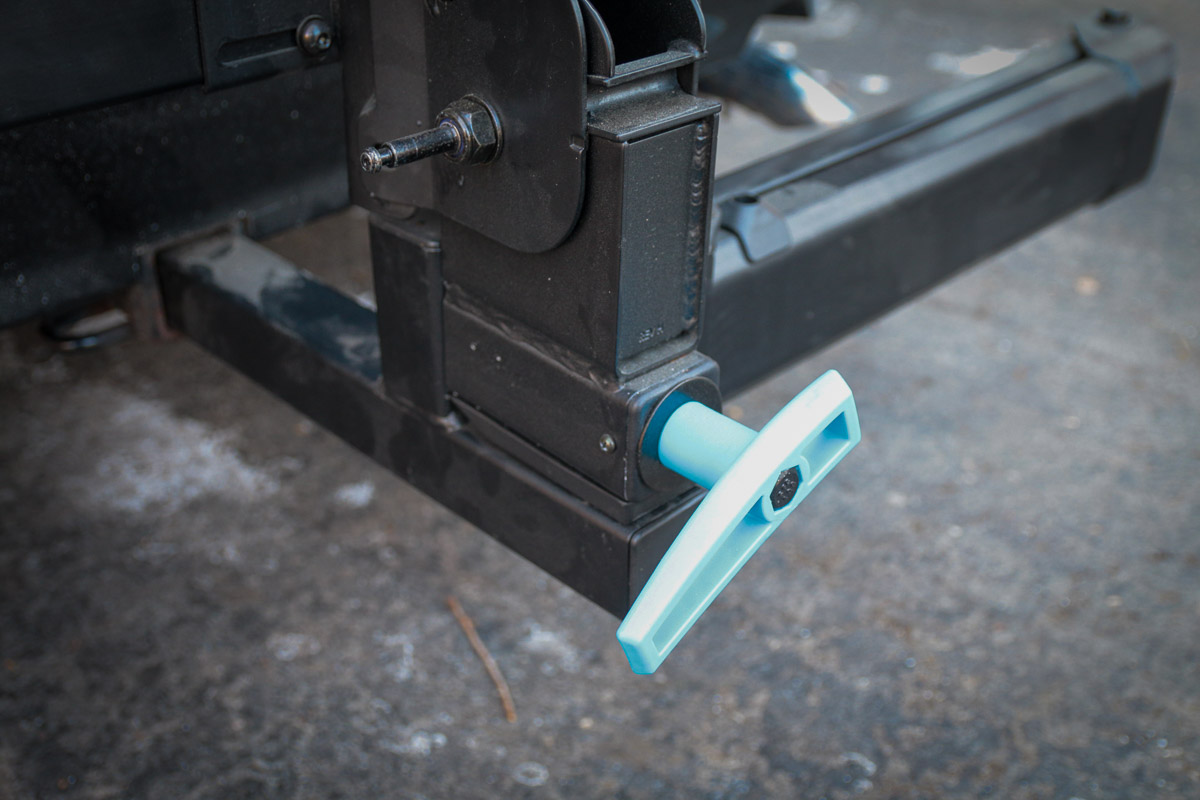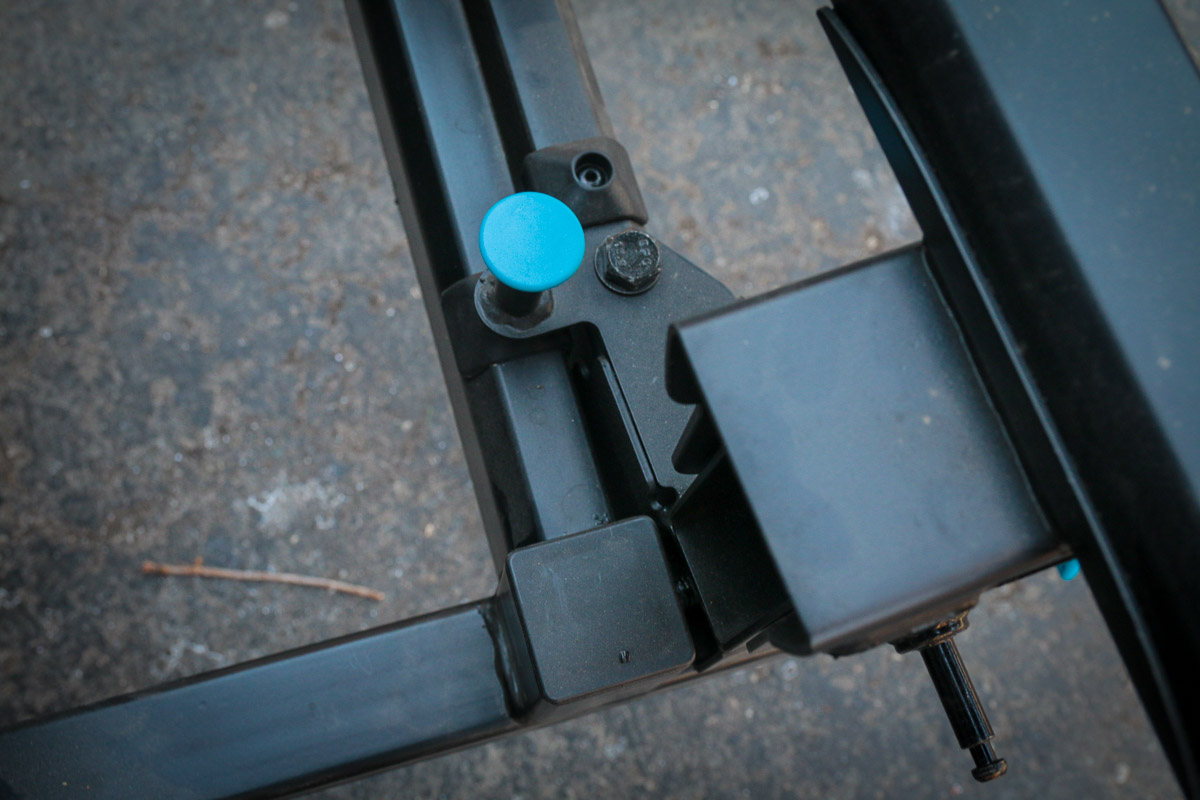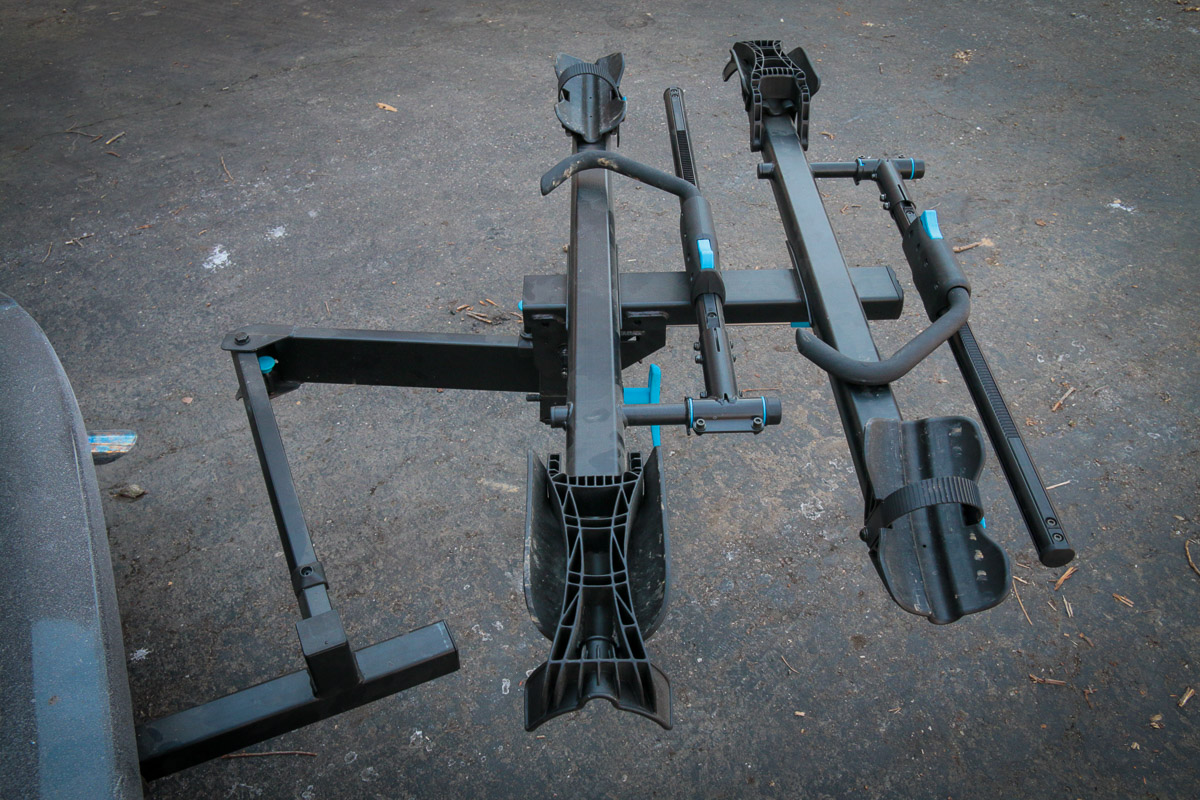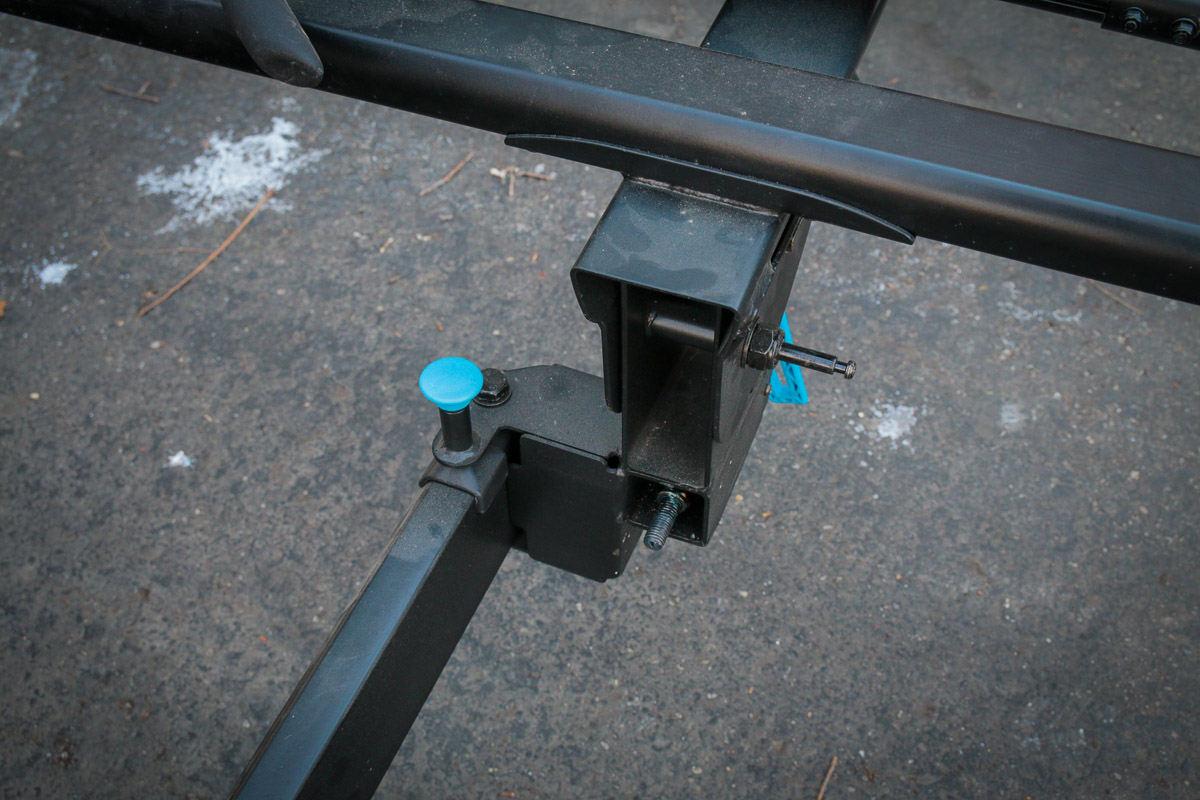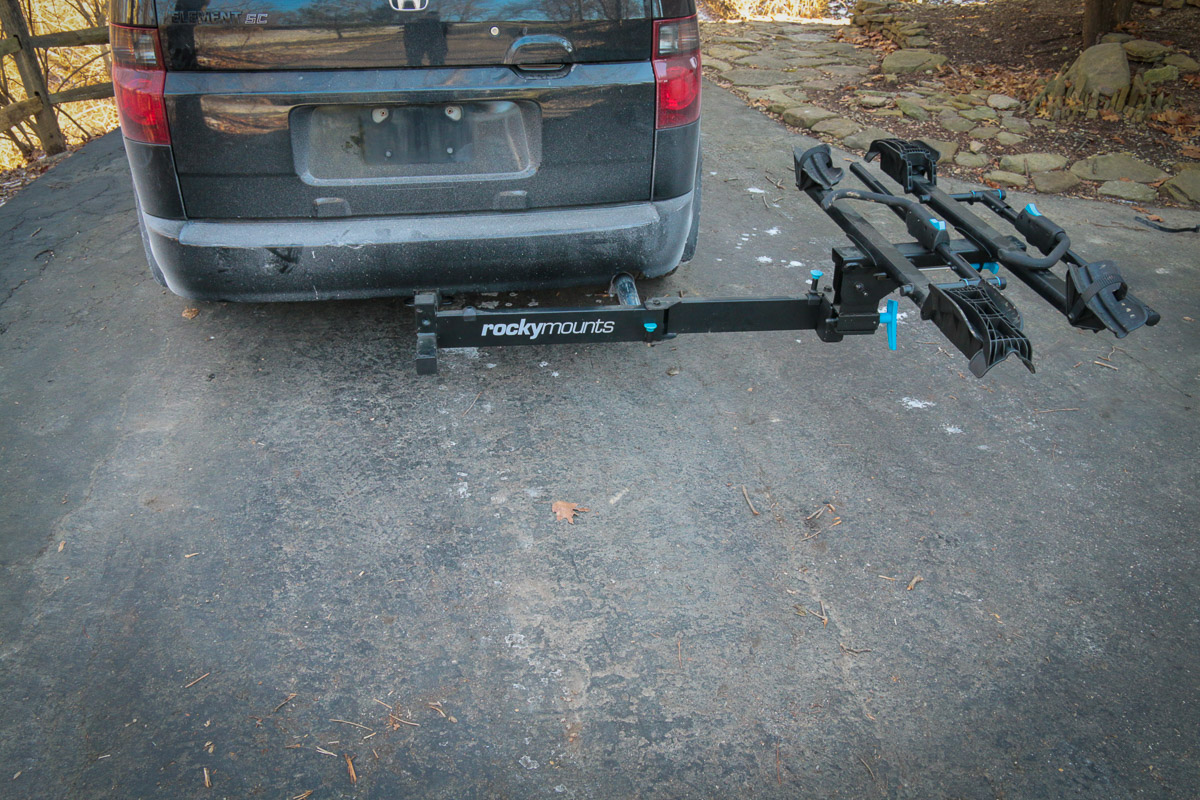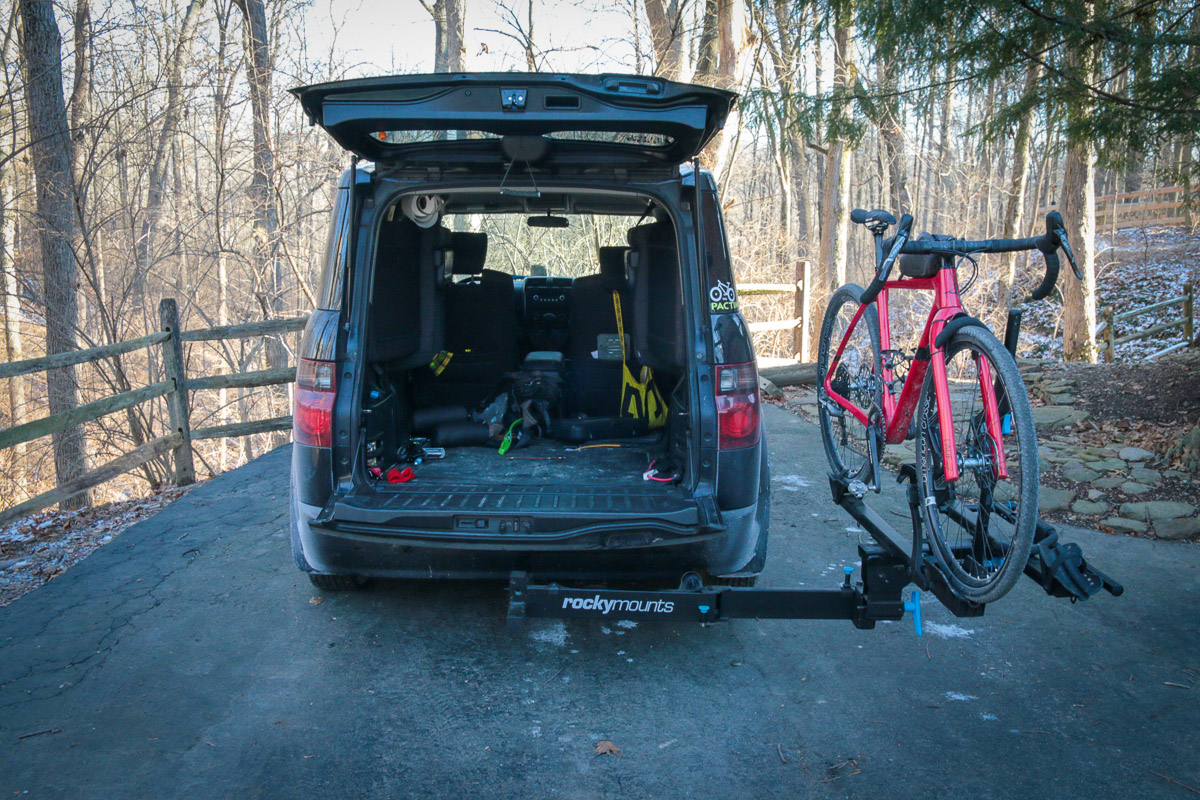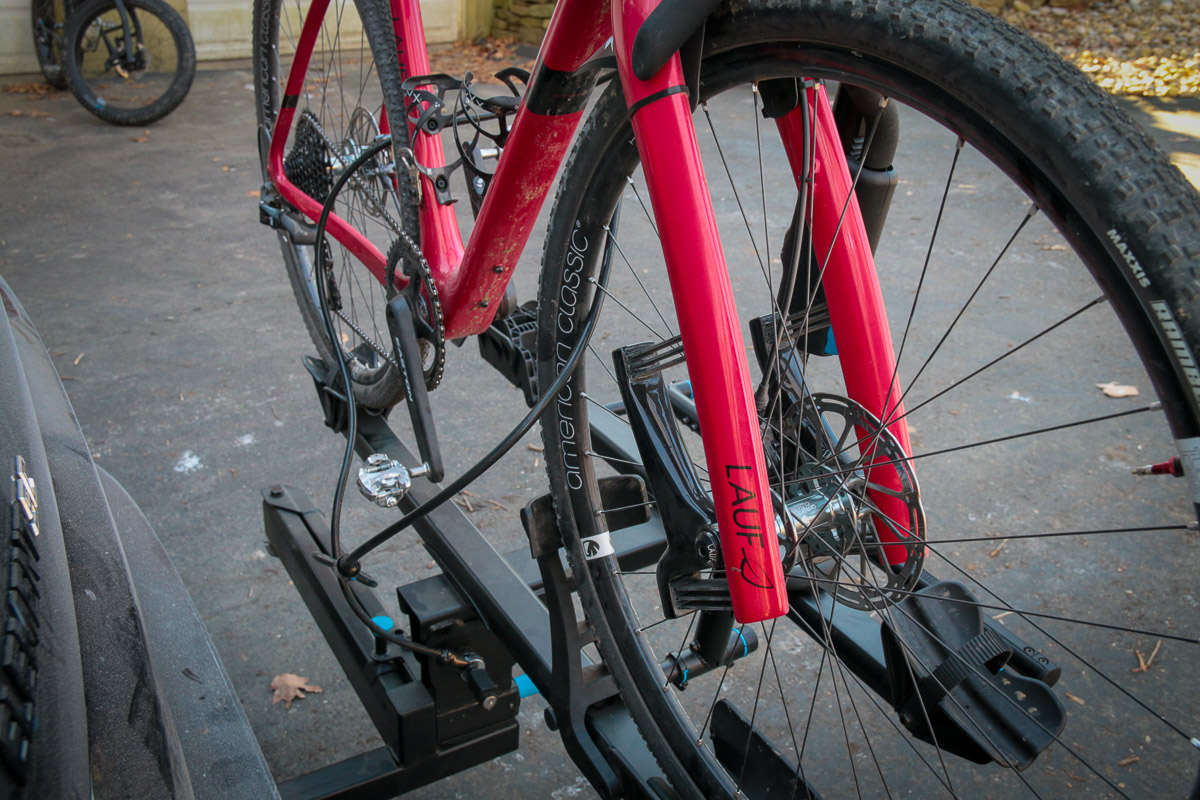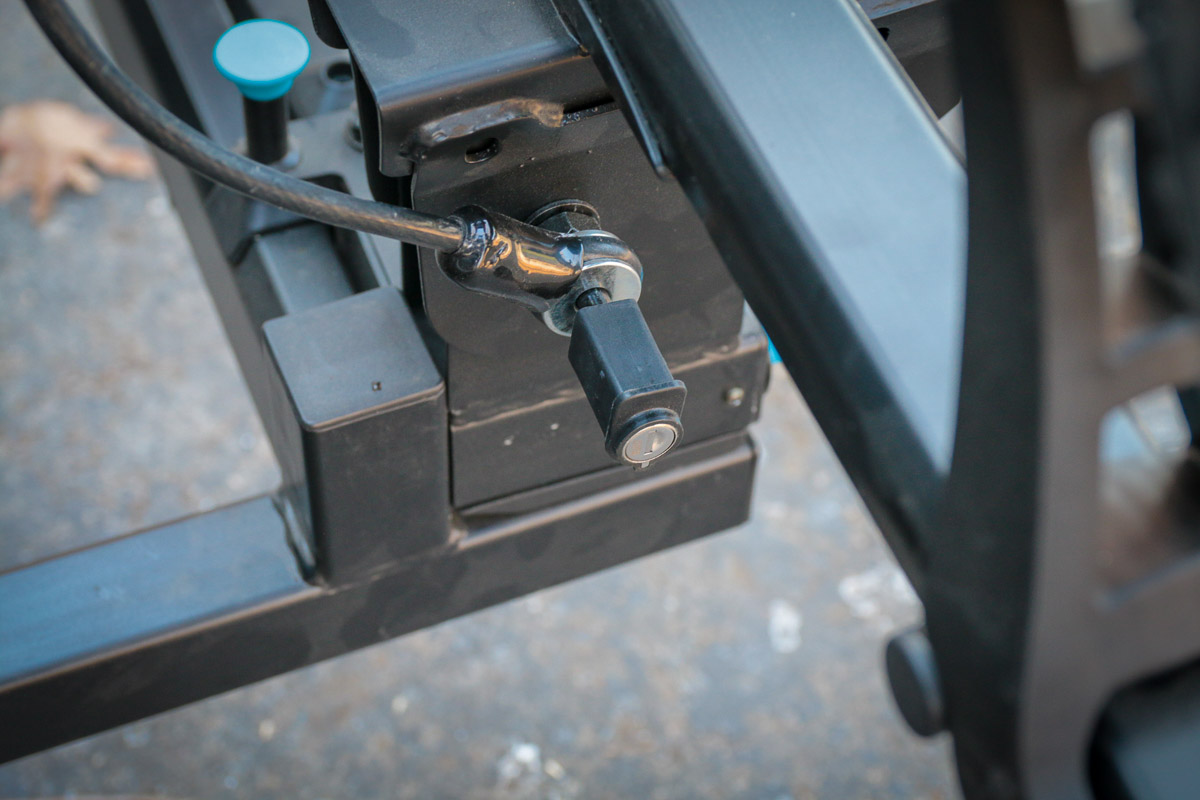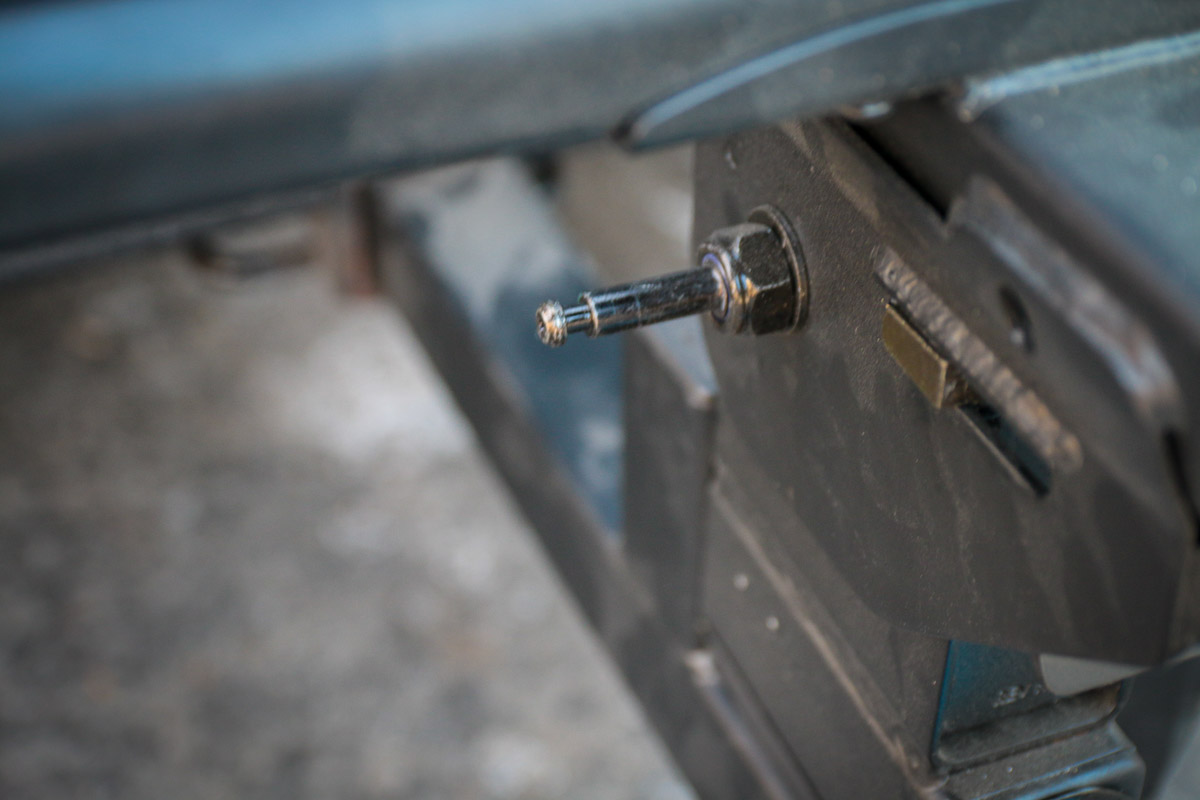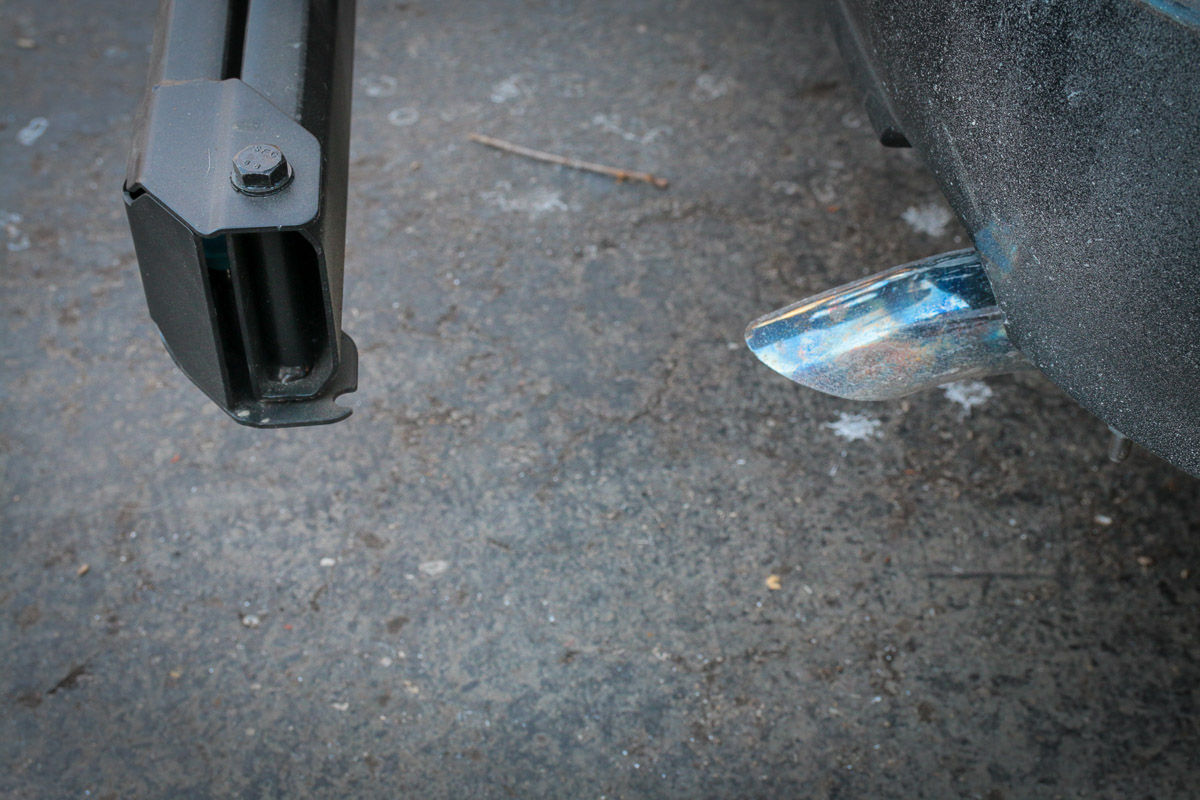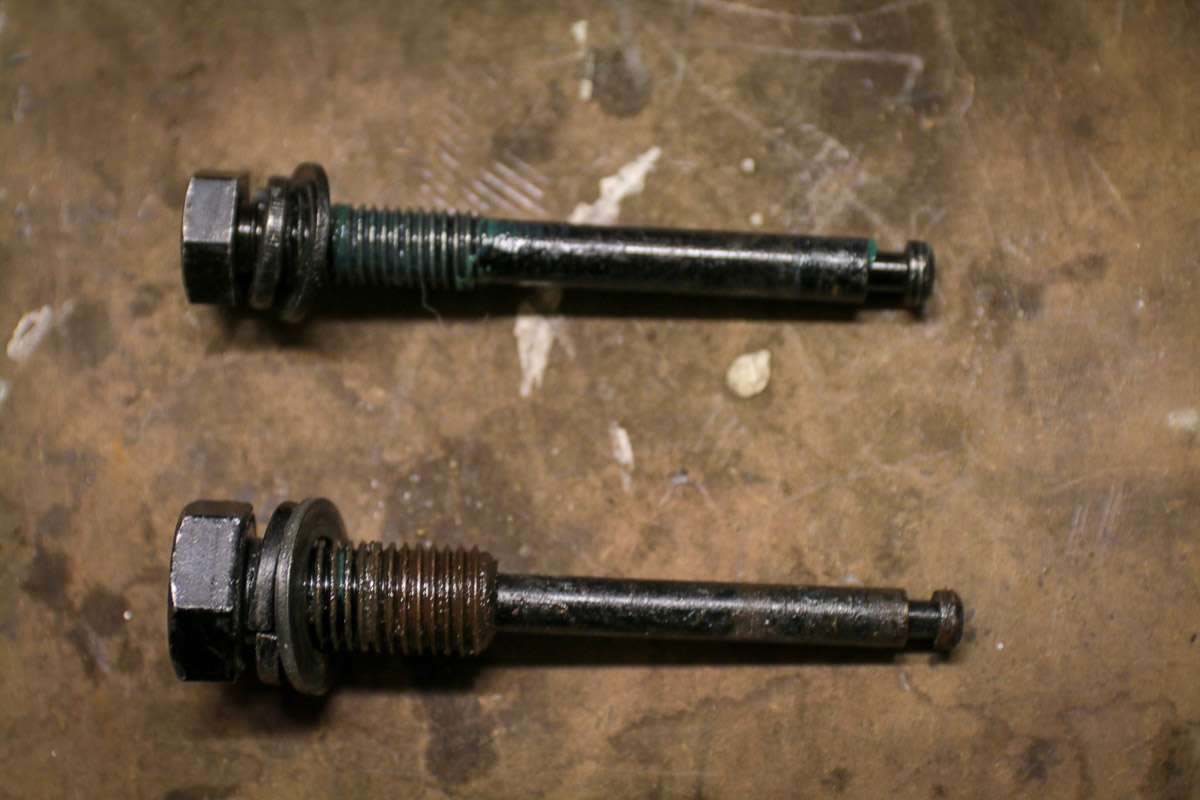Yesterday, we covered the Kuat Pivot – a swing away adapter for 2″ hitch mounted bike racks. Today, we’re checking out the RockyMounts Backstage. Like the Pivot it allows the rack to swing away from the vehicle, but unlike the Pivot it is a dedicated rack. Meaning the swinging portion is built into the rack itself.
That has both advantages and disadvantages. For starters, the whole package of the Backstage ends up quite a bit lighter than the Kuat Pivot + Kuat NV 2.0 two bike rack. While the Kuat combination checks in at nearly 100lbs, the RockyMounts Backstage is only 62.4lbs. However, since you can’t split the rack from the adapter, you’re forced to carry around one 62.4lb rack when you need to remove or install it. The Kuat system you can split it up and carry one 47lb piece and the other 53.8lb piece.
You’re also limited to the included rack with the Backstage where the Pivot uses your choice of hitch bike rack. Fortunately for RockyMounts, the rack (which is essentially their MonoRail with a swing away option) is pretty good. The flip up cradles will carry 20-29″ wheels with tires that are up to 5″ wide (with the included extension straps). The two trays are spaced at 12″ apart and include 3″ of lateral adjustment to help clear bars and seats. Carrying a 60lb max weight per bike and a 48″ max wheelbase, the rack should be a good option for heavy and cumbersome bikes like e-bikes which can be a pain to get on a rack.
Compared to the Pivot + NV 2.0, the bikes are about 6″ closer to the bumper. To flip the rack up or down, the Backstage has a very easy to use release which is always close to the end of the rack. It’s important to note that the Backstage is a dedicated two bike rack – you can not add an additional tray like some other RockyMounts racks.
To get the party started, you must first unthread the blue handle at the base of the rack completely to unlock it. This is definitely a bit more time consuming than the Pivot latch, but feels a bit more secure once tight.
Even after the handle is completely disengaged, the rack still won’t pivot freely however. As an additional fail safe, there is a spring loaded release button just behind the lever.
Once you pop the release, the rack is free to swing away. This time though, the rack is free to pivot independently of the arm. Once the arm is opened 180°, a middle locking pin snaps into place preventing the arm from accidentally closing. Then, once the rack is in place the first safety release snaps into place locking the rack in place. All of this is meant to keep the rack from folding in on you if you’re parked on a slope.
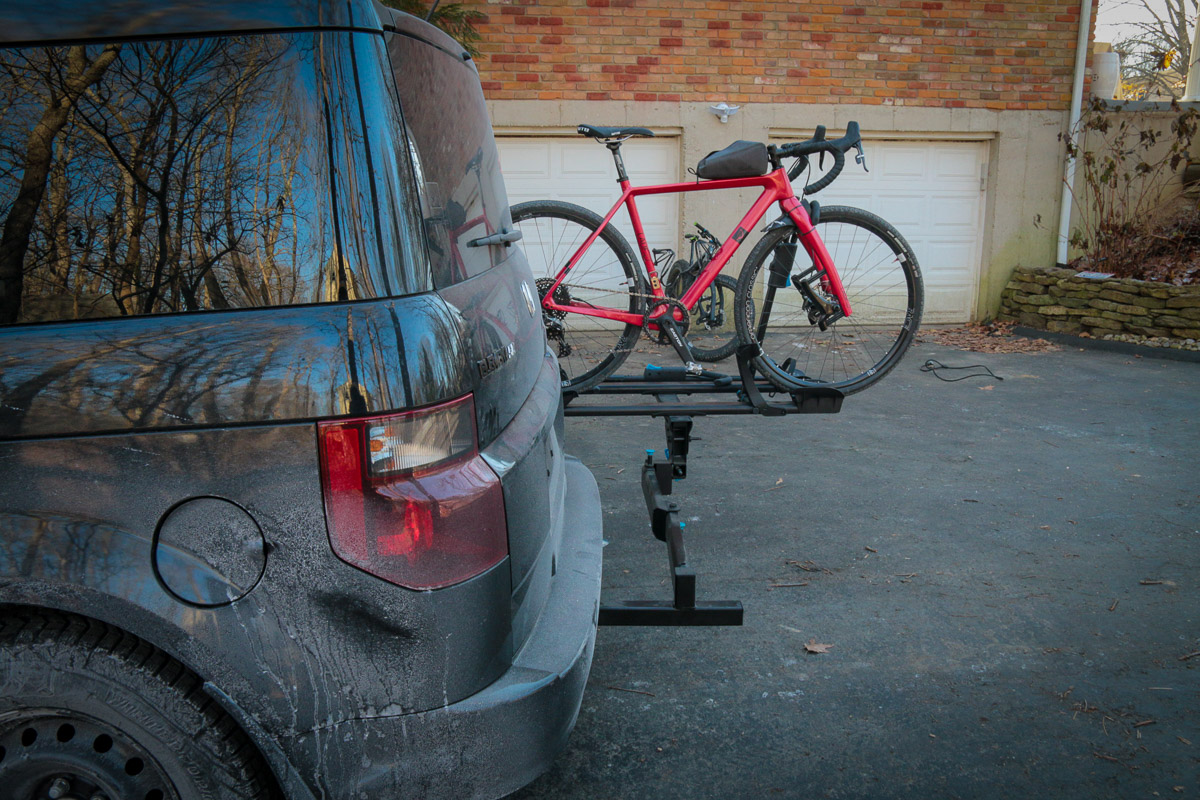
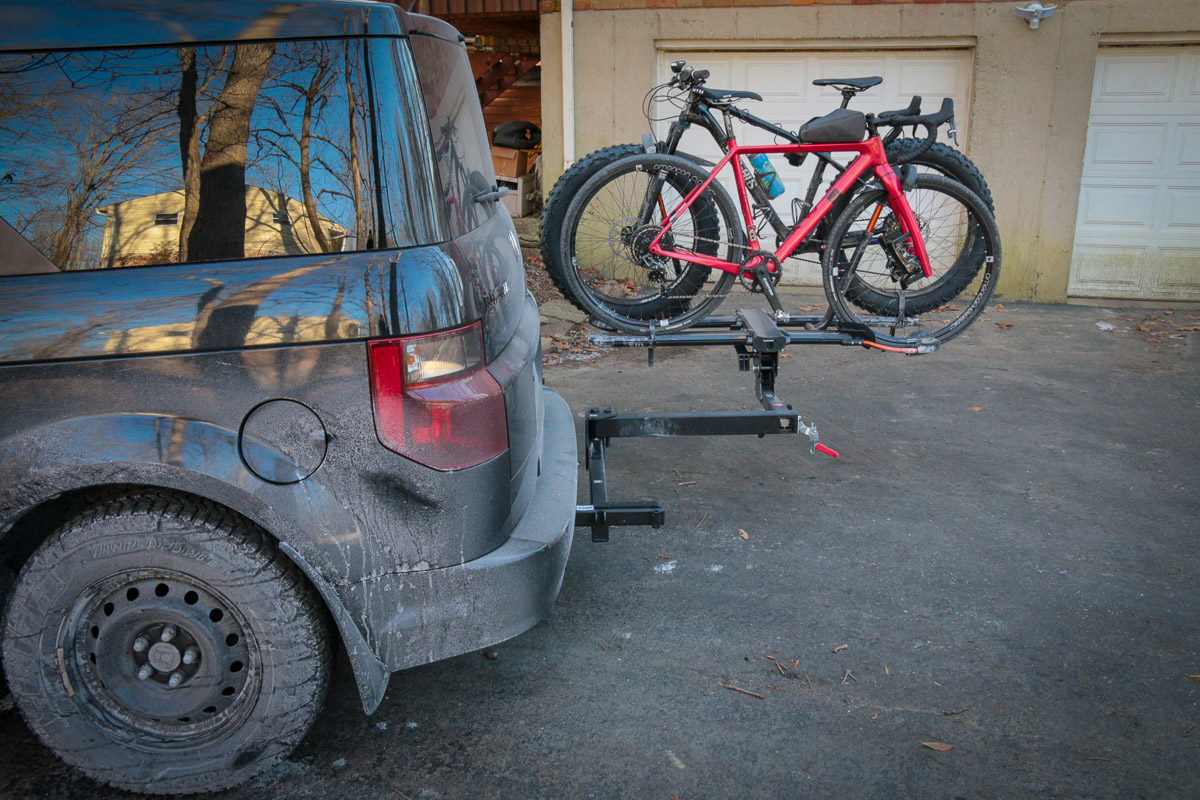
Like the Pivot, the Backstage offers complete access to the back of your vehicle while the rack is loaded or unloaded. There is a big difference in where the bikes are positioned however as the Backstage puts the center of the bikes 180° from the rack. The Pivot ends up with the bikes farther back from the end of the vehicle since the swing away portion only makes a 90° bend. The Backstage will clear 42″ from the center of the hitch so it should fit most vehicles, but the positioning is something to consider say, if you have an awning attached to your vehicle and don’t want the bikes to interfere. Most likely it won’t be an issue, but it is something to consider.
To lock up your belongings, the Backstage includes a lock for the hitch pin, as well as a second lock for the “hitch pin” on the rack arm itself. This allows you to loop the includes lock cable around the bikes, back through itself, and then lock it to the pin. It’s not the highest security measure but it should keep your bikes safe for quick trips into the store, and it’s very easy to use. You’ll have to keep the cable inside your vehicle when you’re not using it since it’s not integrated into the rack, but it’s almost easier to use that way since you don’t have to thread a cable back into a rack arm after each use.
Like the Pivot, the proximity of the arm to the exhaust pipe is a concern. The first long trip with the rack installed and my Honda Element SC’s stock exhaust pipe saw the rack get very hot and pretty dirty. While it does’t seem to have affected the rack, it is something to keep an eye on. Compared to the Kuat Pivot, the Backstage arm sits about 6″ farther away from the exhaust pipe and it’s half the height meaning it should play better with vehicles like the Element. As mentioned, this is a vehicle specific issue and will vary from one to the next.
Part of the additional clearance is the fact that the Backstage uses a standard hitch pin (above, top), compared to the larger pin of the Pivot. That allows me to use the second mounting hole on my hitch which adds about an inch of additional space.
We were sent a very early sample so this may have improved on production, but one of the little things that bugged me was the fact that the rack itself doesn’t sit straight and there seems to be a good amount of play in most of the joints, even with the bolts tight. None of this affects how the rack performs, but it doesn’t feel quite like the quality we’ve come to expect from RockyMounts. When asked, RockyMounts stated that it was likely due to it being an early sample and that they stand behind all of their products with a lifetime warranty should they every have an issue.
At the end of the day, the Backstage seems like a good answer for those that want a platform hitch rack with access to the back of their vehicle – if you only want or need to carry up to two bikes. That’s the biggest difference between the Backstage and Pivot – literally. The Pivot + a four bike rack is a massive piece of hardware, so the Backstage seems like the perfect alternative for lighter duty applications. It carries its two bikes well, sits farther away from the exhaust, and still offers the full swing away feature that many of us are looking for. And at $574, it’s more expensive than the $295 Pivot, but much less expensive than the Pivot + a rack ($924 for the Pivot + NV 2.0 combo). Available now for a pre-order, expect these to start shipping January 20th.
